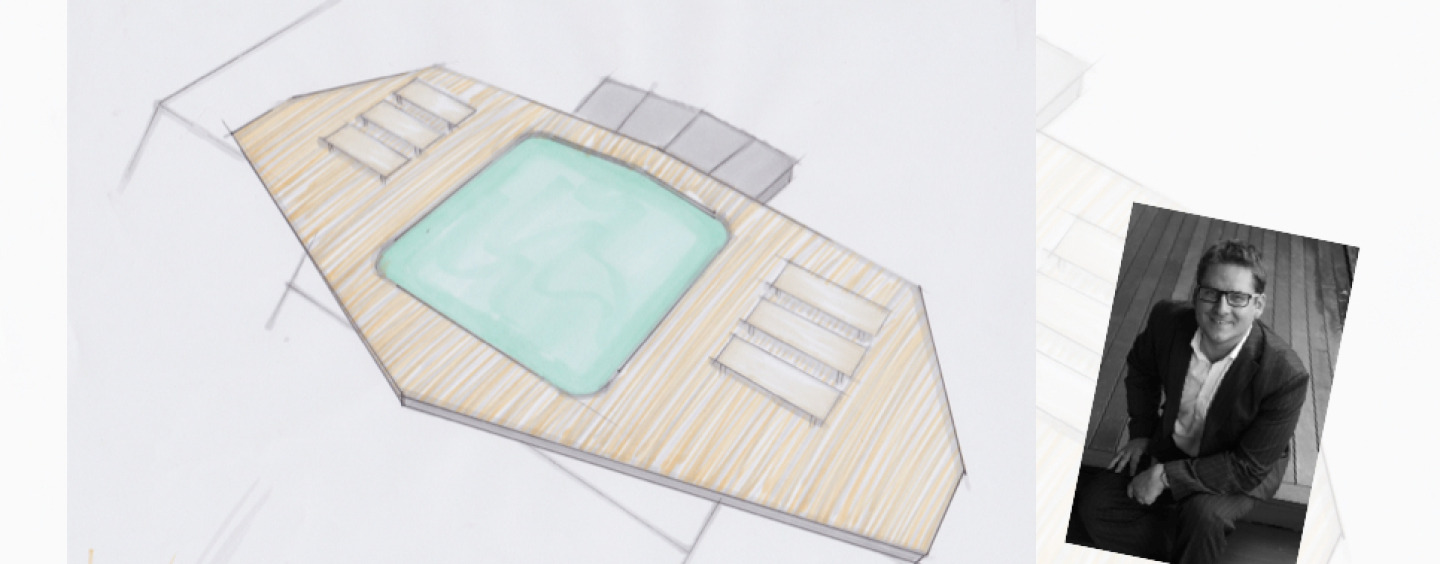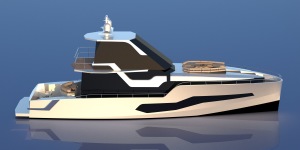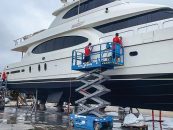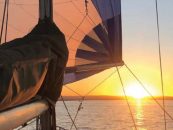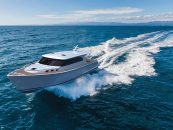Misha Merzliakov is a yacht designer based in Brisbane. Born in Sydney and raised in Brisbane, he lived abroad and in Sydney before returning home to Queensland. Currently, he is working on a 50ft sailing yacht refit project and has another larger sailing yacht concept brewing. His design, the Battlewagon, a 70ft luxury sport fisher, has been shortlisted for the Concept Under 40 Metres Award in The International Yacht & Aviation Awards 2017 by the Design Society.
What is your yacht design history?
I started immediately in this field with Oceanic Yacht Design on the Gold Coast. First day on the job was working on a 100ft Azzura motor yacht. Never looked back. Then, on to Tony Castro Yacht Design, Oceanfast and Austal ships. There is a pattern there: design office, design office, shipyard and shipyard. The shipyard teaches you how to design better.
When I started my degree in naval architecture, superyacht design was what I was aiming for. I suppose it is the creative nature of the beast. Interiors and exteriors and even the technical have a certain charm when applied to a superyacht. It is the ultimate way to create a vision.
Salvatori said, “Perfect engineering does not imply good design.” True?
Engineers are rewarded for reaching the desired technical outcome. Designers are rewarded for achieving the desired aesthetic and functional outcome. The scopes or aims sometimes do not align with one another across the disciplines. That is why you need project managers!
What is the most appealing to prospective yacht owners?
Some owners like an adventurous design, and I hope I bring that to each project.
How much of your knowledge involves an understanding of ergonomics and history?
Quite a bit. History helps with context. Ergonomics, well it’s everything!
Digital programs used?
AutoCAD, Rhino, Maxsurf, Alias, Photoshop, rendering software. And not to forget the pencil! You can communicate a lot with a pencil sketch.
As a designer, what is most important to you?
Experience helps your process and focus. Style and finesse takes time to develop but can be evident in shimmers early on I’m told by the great designers.
Does a designer need experience in boat repairs and boat-building?
I think so. I have met a lot of star designers, like Espen Oeino, Tim Heywood, Andrew Winch and Terrence Disdale, to name a few. And the common advice has been that talent is good but you do also need to learn how to get things built.
What is your boating lifestyle?
Every chance I get, I am out on the water. I’m also always out with clients, builders, et al. It is very important to my life and career. I can’t go a few days without seeing the water.
The future of yacht designing in Australia?
Queensland and Western Australia have become attractive places to bring projects for new build, refit, and repair. If the projects continue to grow in Australia, so will the need for designers. In my line of business, designing for the 40-300ft boats is indispensable to construction, quoting and tendering.
Queensland is a hub for recreational boats. I think its waterways, weather, and natural attractions are key. The marine industry based here is quite mature. So combine that with deep waterways and the Queensland attractions, it is a recipe for success.
—————
The “Battlewagon”
The concept
This design has been short-listed for a yacht design award in the under 40-metre category. The feature I focused on was the exterior styling, specifically a more customized approach. Rather than mimic competitors, I go for a fresh look and achieve a vessel that says what it does. The lines and styling of the vessel can be described as aggressive, purposeful, adventurous, and lots of glass. Its unique features include the hull form to allow better low speed cruising efficiency, the usage of glass on a vessel this size, a generous forward lounge. Its appearance is innovative. I have had many applaud the wild nature of the design, considering low speed cruising as an important operational profile. I hope Battlewagon would be built. The design is scalable so in essence can be applied to a smaller or larger vessel.
The fixed furniture are positioned in the area exposed to the weather. Won’t there be higher maintenance requirements in the future?
Good question. Furniture covers would achieve this. The backrests collapse down to make this easier. You see covers often on aft deck furniture and forward sun beds etc. The forward area is primarily for fair weather cruising — the best seat in the house, so to speak, when steaming at five knots, no wind, summer weather, down a river at sunset. Magic!
/Sep-Dec2017






















